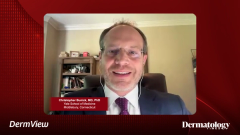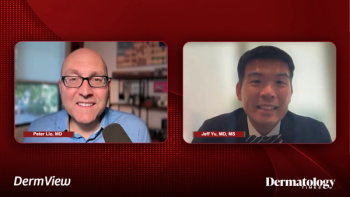
Selecting Patients for Oral Antibiotic Therapy
An expert discusses how clinical presentation guides the selective use of oral antibiotics for moderate acne, emphasizing short-term treatment, careful transitions to maintenance therapy, and individualized plans to achieve lasting skin clearance while minimizing antibiotic exposure.
Episodes in this series

When identifying which patients are best suited for oral antibiotics in acne treatment, clinical presentation serves as a key guide. Patients typically fall into 3 categories: those with mild acne that can be managed effectively with topical therapies; those with severe nodulocystic or scarring acne, for whom isotretinoin is often the first-line option; and those in the moderate to moderately severe category, who often benefit from oral antibiotics. The middle group—patients with inflammatory papules or more persistent breakouts—is particularly responsive to a short course of antibiotics as part of an initial, intensive treatment phase.
The goal of prescribing oral antibiotics in these cases is to achieve rapid and visible improvement within a defined period, usually 3 months. This “knockout phase” is followed by a tapering strategy that transitions patients to topical maintenance therapy, thereby limiting prolonged antibiotic exposure. Occasionally, the antibiotic phase may be extended up to 6 months, depending on individual response. Narrow-spectrum agents, such as sarecycline, have supporting data for longer-term safety, including one-year studies in pediatric populations. However, stewardship principles generally favor limiting use to the shortest effective duration and transitioning to alternative therapies if progress plateaus.
If a patient does not achieve sustained improvement after the initial antibiotic course, the treatment plan is reevaluated. For persistent or more treatment-resistant acne, systemic options such as isotretinoin are commonly employed. In certain cases—particularly in female patients—hormonal agents such as spironolactone may be considered. The approach remains individualized, with a focus on achieving clear skin efficiently while minimizing long-term antibiotic use. The ultimate objective is not just control, but durable resolution, enabling patients to move beyond the burden of chronic acne.
Newsletter
Like what you’re reading? Subscribe to Dermatology Times for weekly updates on therapies, innovations, and real-world practice tips.
















